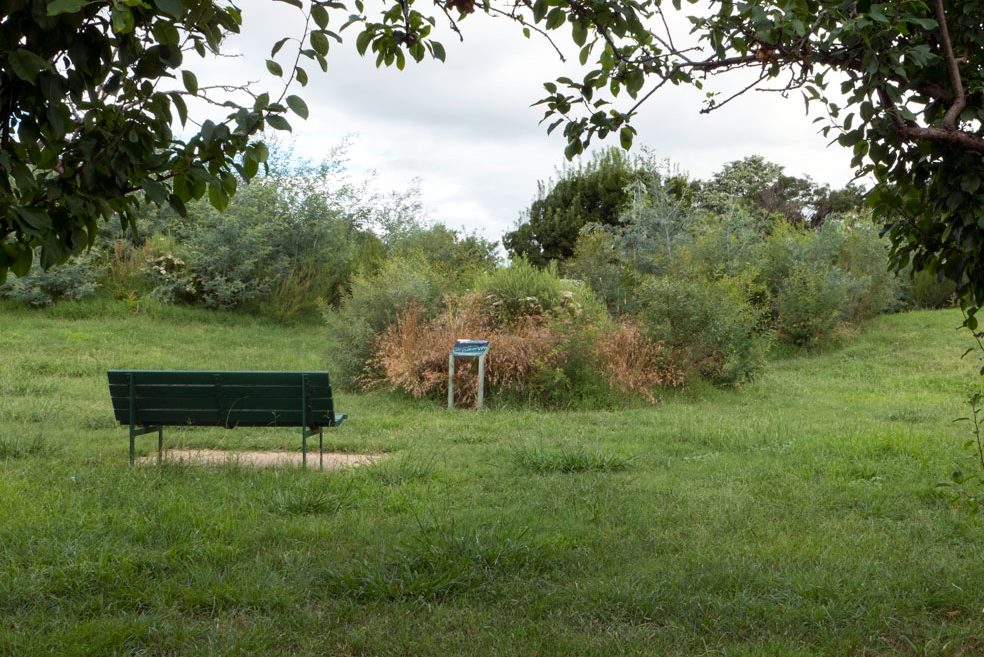
“These small and dense clumps of trees are now likely to be counted as part of the government’s dubious off-set regimes and used to justify the destruction of trees and habitats for developments,” writes “Canberra Matters” columnist PAUL COSTIGAN.
I RECENTLY sat on the pictured bench and pondered the shrubbery and trees planted in several clumps on a mound in a Downer park.

There is a sign that boasts about how this tight planting of greenery, labelled a micro-forest, will assist in cooling the larger park. Other claims are that the planting will provide habitat and support community health and wellbeing.
When done large, these compact woodlands or forests are reported internationally to have provided benefits to degraded and urban areas and have created biodiversity (where there was none). Some were established alongside other habitats such as meadows or waterways to recreate complex ecosystems.
The Downer model and those similar in other suburbs, consist of dense clumps of plants. They are located within reasonable size parklands of the usual mown grass and healthy trees. These suburbs have established ecosystems (the birds were very active on another evening visit).
The original habitat of Canberra was open grassy woodlands (not closed forests). The old indigenous trees had an understorey of native plants, grasses and fallen timbers. This environment supported a diversity of bird life, mammals and other creatures.
Someone has done a lot of work to make these new, small, sample forests happen. It takes a dedicated group of residents to get the plantings in place. But while it is wonderful for community members to come together to establish more green infrastructure, the stated claims and expectations are large compared to the reality of what may be delivered.
Having walked around the mound of shrubbery, I looked across the road to the neighbouring houses. Most have an abundance of gardens with dense shrubbery and ample trees. The biodiversity of these suburban gardens is rich. This brings me to recent UK research on the role of small household gardens in the provision of biodiversity with the emphasis on pollinators – bees and other creatures.
The research revealed that it was not the large gardens in suburban areas that were solely important for biodiversity. The results indicated clearly a significant biodiversity benefit from the combination of the small gardens surveyed. Each had different plants and allowed the bees to enjoy a range of flowering plants at various times of the year.
Debates in Australia often centre on whether gardeners should plant native or introduced plants. What this research showed was that it was about what the plants offered the local birds, bees and other creatures. The more flowers the better. Some wonderful native plants that produce masses of flowers would be great alongside your preferred flowering plants (native or not).
The key to success is diversity in our gardens – large and small, on apartment balconies and in small spaces squeezed on to blocks with supersized houses. More needs to be done to encourage and inform residents of their role in increasing biodiversity with diverse and enjoyable garden environments.
When it comes to our open spaces and parklands actions are required to hang on to more of the established indigenous trees and shrubbery. The older trees are key to local biodiversity. Agencies should be planning their replacement with succession plans for the older trees to ensure the biodiversity is maintained – and increased.
The ACT government has encouraged these small forest projects to show that the politicians are doing something. These small and dense clumps of trees are now likely to be counted as part of the government’s dubious off-set regimes and used to justify the destruction of trees and habitats for developments.
Good things are happening, such as the Fowles Street regeneration in Weston and the diversity plantings near the Campbell shops. These point to the need for an evidence-based approach by the whole of government to increase biodiversity through diverse plantings that match the local fauna.
Many of our suburban parks, such as this one in Downer, could do with serious upgrades of play equipment and spaces for children integrated with improved tree canopies, shrubbery and gardens.
What happens in our open spaces needs to reflect local habitat needs and assist increasing the diversity of suburban fauna. The jury remains out on the micro-forests model being introduced into this city located in these tableland environments. I suspect I will be sitting on that Downer park bench a few more times yet to see if I am wrong and what this small experiment actually delivers.
Paul Costigan is an independent commentator and consultant on the visual arts, photography, urban design, environmental issues and everyday matters. Read more of his columns on citynews.com.au
Who can be trusted?
In a world of spin and confusion, there’s never been a more important time to support independent journalism in Canberra.
If you trust our work online and want to enforce the power of independent voices, I invite you to make a small contribution.
Every dollar of support is invested back into our journalism to help keep citynews.com.au strong and free.
Thank you,
Ian Meikle, editor




Leave a Reply